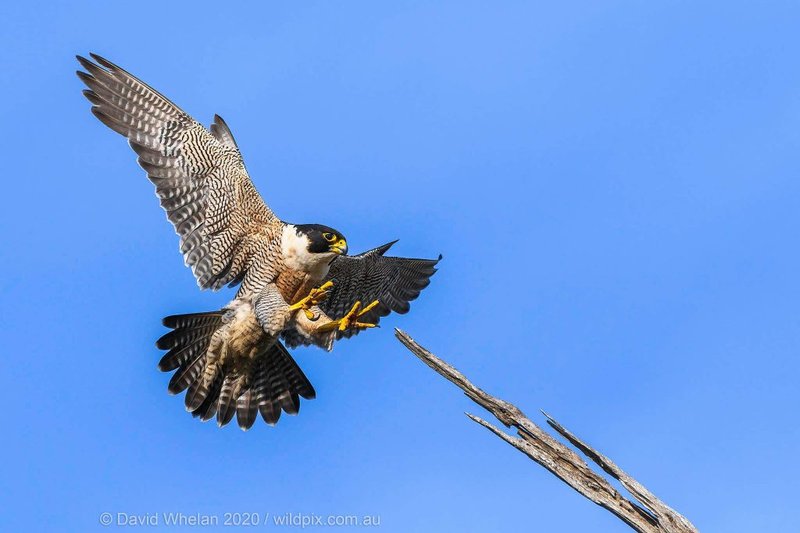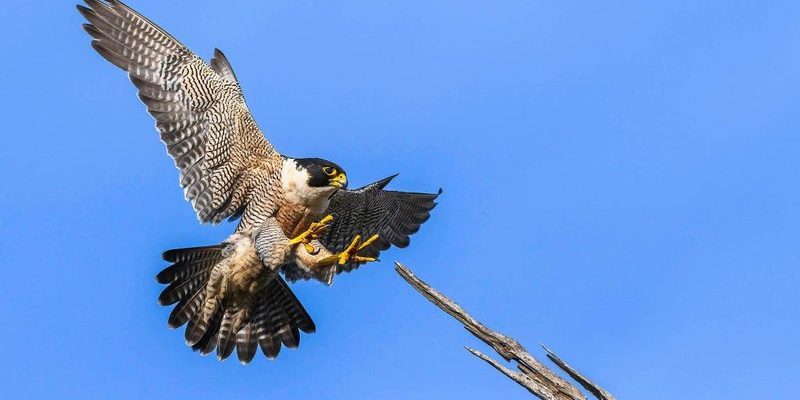
In this article, we’ll dive into the fascinating world of the peregrine falcon. We’ll explore how they hunt, their flight mechanics, and what makes their behaviors so captivating. Whether you’re a birdwatching enthusiast or just curious about nature, let’s unpack the incredible skills that help these birds thrive in their environments.
How Peregrine Falcons Hunt
Hunting is no simple task, even for a bird as skilled as the peregrine falcon. They are master strategists, using various techniques to catch their prey. One of the most impressive methods is their unique *stooping* technique. During a stoop, a peregrine falcon will soar high above its target before tucking in its wings and diving at remarkable speeds. The pressure exerted during this dive can often stun or incapacitate their quarry before they even reach it.
What’s even more fascinating is how they use the element of surprise. Peregrines can spot their prey from high altitudes, often identifying small birds as their target. With keen eyesight that’s eight to ten times more powerful than a human’s, they can track movement effortlessly. Once they have their sights set, they can adjust their position mid-flight, almost like a laser-guided missile.
But it’s not just about speed. The peregrine falcon also employs a clever mix of *camouflage* and stealth. Their slate-gray wings and spotted underbelly allow them to blend into the skyline or rocky cliffs. This makes it challenging for their chosen meal to spot them until it’s too late. Next time you see one in flight, pay attention to how they smartly position themselves—it’s a display of intelligence as much as it is skill.
The Mechanics of Their Flight
Understanding how peregrine falcons fly helps us appreciate their talents even more. Their body is built for both speed and agility. With long, pointed wings and a tapered tail, they can maneuver through the air with both precision and grace. These adaptations allow them to take sharp turns while maintaining their speed, unlike many other birds.
When they’re cruising at high altitudes, their wings act as powerful tools that let them catch thermals. These rising columns of warm air help them soar effortlessly, conserving energy for when it’s time to hunt. It’s like a well-timed elevator ride that saves fuel for the really exciting parts of the journey.
And let’s not forget about the intricacies of their flight control. Peregrines can adjust their wing positions and tail feathers to change direction quickly. This level of control is essential not just for chasing prey but also for navigating through challenging environments like urban landscapes or dense forests.
The Role of Speed in Hunting
As we’ve noted, speed is a defining feature of the peregrine falcon’s hunting style. Why is speed so crucial? Because it gives them an edge when hunting fast-flying birds. Their high-speed dives create a *shock and awe* effect, startling their prey and making escape nearly impossible.
Picture this: a small bird, blissfully unaware, is eating in a field. Suddenly, a shadow swoops down from above. The little bird has mere seconds to react. Most can’t even begin to escape as the peregrine hurtles towards them at dizzying speeds. It’s a natural display of how speed, in the animal kingdom, can make all the difference between life and death.
Interestingly, their speed isn’t just a byproduct of their body shape. It’s also about the way they flap their wings. Peregrine falcons use a unique blend of a powerful wingbeat during takeoff and a streamlined body posture during dives. This combination maximizes their speed and allows for such breathtaking displays in the air.
Adaptations for Survival
The peregrine falcon has evolved a range of adaptations that make it a top predator. For starters, they have strong, sharp talons that can grip their prey tightly—think of them as built-in grips. These talons are crucial for catching and holding onto slippery birds mid-flight.
Another key adaptation involves their beak. Not only is it sharp and hooked for tearing flesh, but it also has a unique curve. This structure allows the falcon to efficiently dispatch its prey while in flight. It’s a bit like having the perfect tool for a job—everything about their physical morphology is designed for hunting success.
Their vision plays a crucial role too. With specialized structures in their eyes, they can see ultraviolet light, which helps them track prey better than many other predators. Imagine seeing a world lit up with colors and patterns that we can’t perceive—it gives them an extraordinary advantage in finding food.
The Importance of Migration
Many peregrine falcons migrate, flying thousands of miles to find the best hunting grounds and breeding sites. For instance, those that breed in North America often travel to warmer climates in Central and South America during winter. This migration is crucial for their survival; it allows them to access a wider range of prey and avoid the harsh winter conditions.
During migration, peregrines use a mix of thermal currents and energy-efficient flapping to cover long distances. This is no easy feat, but their physical adaptations make them perfectly suited to handle it. It’s remarkable to think about how a bird can navigate thousands of miles, leaving behind one habitat to find another that better suits its needs.
Migrating also helps maintain genetic diversity within the species. When peregrine populations intermingle from different regions, they contribute to healthier and more resilient populations overall. This mixing of genes helps ensure that future generations of peregrines have the best traits for survival.
Conservation and Human Impact
Despite their incredible adaptations and hunting prowess, peregrine falcons have faced serious challenges, particularly from human activity. Pesticides like DDT once caused dramatic declines in their populations, leading them to the brink of extinction in some areas. Fortunately, conservation efforts have helped many populations rebound.
Today, they are often found in urban areas, where they’ve adapted to life among skyscrapers. You might even see them nesting on tall buildings, proving that they can thrive in unexpected places. This adaptability speaks volumes about their resilience. While some may view cities as concrete jungles, peregrines see opportunities.
However, it’s essential to remain vigilant about their habitats. Urban development, habitat destruction, and pollution still pose threats. Supporting local conservation efforts and being mindful of the environment can help ensure that these stunning birds continue to grace our skies.
The unique flying and hunting techniques of the peregrine falcon highlight not just their extraordinary biology but also the delicate balance of nature. Their speeds, hunting strategies, and adaptations make them fascinating creatures to study and observe. Plus, their ability to thrive in changing environments reflects a remarkable resilience that connects to broader themes of survival in the natural world.
So, the next time you spot a peregrine falcon soaring above, take a moment to appreciate the ingenuity of nature. These birds are not just fast—they’re a symbol of the wild beauty and complexity that exists all around us. Whether you’re an avid birdwatcher or simply a curious onlooker, the peregrine falcon invites us all to marvel at the wonders of wildlife and the skills that help it thrive.

